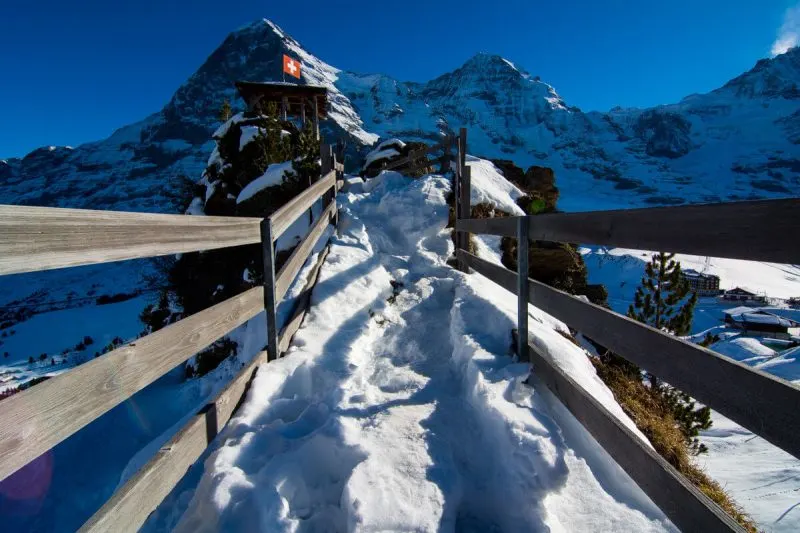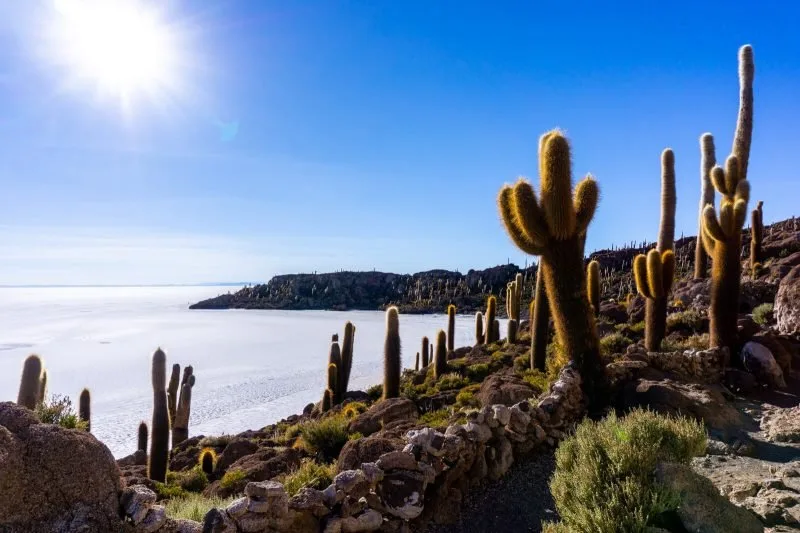Ever dreamed of standing atop a snow-capped peak, where the crisp mountain air fills your lungs and untouched wilderness stretches as far as the eye can see? From the towering peaks of the Andes to the historic trails of the Alps, cold-weather hiking offers some of the most rewarding and transformative outdoor experiences available to adventurers.
Whether you’re drawn to the solitude of Peru’s Cordillera Huayhuash or the well-maintained paths through the French Alps, this guide will help you prepare for seven extraordinary treks that promise not just breathtaking views, but also profound moments of personal discovery and connection with nature’s raw beauty.
Essential Gear and Clothing for Cold-Climate Treks
Heading into snowy mountains demands serious attention to your gear choices. The harsh conditions in places like the Andes and Alps require reliable equipment that can handle rapid weather changes. For challenging winter hikes, a battery-powered heated jacket can provide crucial warmth when temperatures plummet.
Your choice of clothing isn’t just about comfort – it’s about survival. With hypothermia cases occurring most often between 30 and 49 degrees, proper layering becomes essential. The right gear helps prevent ankle injuries, which account for a significant amount of hiking mishaps.
Here’s what you’ll need for a safe cold-weather trek:
- Waterproof boots with excellent ankle support and grip
- Base layers made from moisture-wicking materials
- Insulating mid-layers like fleece or wool
- Weatherproof outer shell jacket and pants
- Thermal gloves, hat, and neck gaiter
Cold-climate hiking isn’t just about packing lots of warm clothes – it’s about creating a smart layering system that adapts to changing conditions. Your gear should work together to manage moisture while keeping you protected from wind and precipitation. Remember that quality equipment might cost more upfront, but it’s worth every penny when you’re miles from shelter in challenging conditions.
Preparation and Safety Strategies for Remote Treks
High-altitude adventures in the Andes demand careful planning and respect for elevation changes. Before tackling demanding routes, you’ll need several days to adjust to the altitude. Your body requires this vital acclimatization period to prevent potentially dangerous altitude sickness symptoms. The stunning views you’ll encounter are worth the wait, but only if you’re healthy enough to enjoy them.
Cold-weather trekking comes with its own set of challenges. About 98% of fatal avalanches are triggered by members within the hiking group, making proper avalanche awareness absolutely essential. Taking a refresher course before your trip could make the difference between a safe journey and a dangerous situation.
Here’s what you need to know before setting out on remote winter trails:
- Learn to read weather patterns and understand how they affect trail conditions
- Master basic emergency response techniques specific to cold environments
- Study recent snowpack reports and avalanche forecasts
- Keep your schedule flexible to work around weather changes
- Map out backup routes in case your primary path becomes inaccessible
Being smart about mountain safety doesn’t mean limiting your adventure – it means ensuring you’ll be around for many more. Pack extra supplies, tell someone your plans, and always check local conditions before heading out. Your preparedness will let you focus on the breathtaking experiences ahead rather than worrying about what might go wrong.
| Expert Tip: Don’t overlook the importance of conditioning hikes at lower elevations to build stamina and mental resilience before attempting remote alpine expeditions. |

Unforgettable Experiences on Iconic Andes Trails
The Andes mountain range offers some of the most breathtaking high-altitude treks on Earth. Peru’s Cordillera Huayhuash stands as a testament to raw, untamed beauty where crystal-clear turquoise lakes mirror soaring peaks. This remote circuit draws far fewer visitors than popular alternatives, making it perfect for those seeking genuine solitude in nature.
For adventurers ready to embrace challenging conditions, these magnificent trails await your footsteps:
- Cordillera Huayhuash Circuit – A remote 8-10 day trek through Peru’s dramatic mountain landscape, featuring pristine alpine lakes and towering peaks
- Torres del Paine W Trek and O Circuit – Wind-swept Patagonian routes showcasing granite spires, massive glaciers, and endless wilderness
- El Choro Trek – A unique Bolivia path crossing from snow-covered mountain passes into warm, subtropical valleys
The Torres del Paine in Patagonia presents an extraordinary opportunity to experience true wilderness. Its famous circuits wind through a landscape where granite towers pierce the sky and ancient glaciers stretch as far as the eye can see. Meanwhile, Bolivia’s El Choro trek offers an incredible diversity of ecosystems, taking hikers through snowy heights before descending into lush valleys teeming with life, all within a single multi-day adventure.
| Fun Fact: Some sections of the Andes trails, like El Choro in Bolivia, follow paths originally built by the Incas, offering hikers a rare opportunity to walk in the footsteps of one of South America’s most advanced ancient civilizations. |
Challenging Alpine Routes Worth the Effort
The Alps stand out with their remarkable network of trails and mountain huts, making them perfect for multi-day adventures in high-altitude terrain. These shelters provide crucial support for hikers tackling demanding routes through snow-covered peaks and valleys. While the infrastructure is excellent, you’ll still need to prepare for tough weather, especially if you’re hiking outside the busy summer months.
Here’s what makes Alpine routes uniquely appealing for cold-weather enthusiasts:
- Well-maintained trail markers help you stay on course even in poor visibility
- Cozy mountain huts offer warm meals and overnight shelter
- Varied terrain suits different skill levels and seasonal conditions
- Local guides and detailed maps are readily available
The French Alps near Annecy showcase some of the most breathtaking winter paths you can explore on snowshoes. These routes let you experience the magical stillness of snow-draped forests and frozen lakes while sticking to safe, marked trails. The key to an incredible Alpine trek lies in smart timing; each season brings distinct challenges and rewards. Spring offers wildflowers poking through melting snow, while autumn treats you to golden larches against white peaks. Even summer can bring sudden snow flurries, so flexibility with your plans is essential.
| To Do: Pack microspikes or snowshoe gear even for spring and autumn hikes, sections of trail can remain icy or snow-covered well beyond winter months. |
Loneliness and Discovery in Frostbound Wilderness
Cold-climate hiking trails offer something truly special – the gift of solitude. You might trek for days without seeing another soul, creating space for deep reflection and genuine communion with nature. The stillness of snow-covered peaks and frost-tipped forests provides a rare chance to experience wilderness in its purest state.
These chilly adventures bring unique opportunities for personal growth and discovery. The raw beauty of icy landscapes can spark moments of wonder that just aren’t possible in warmer, more crowded destinations. Here’s what makes cold-weather treks so transformative:
- Crystal-clear stargazing opportunities in crisp winter air
- Peaceful moments watching your breath form clouds in the morning light
- Spotting wildlife tracks in fresh snow
- Finding untouched powder fields far from typical tourist spots
Embracing the isolation of cold-weather hiking helps develop mental toughness and self-reliance. Each step through snow or over icy terrain builds confidence, while the quiet moments between steps let you tune into nature’s subtle rhythms. The challenge of facing harsh conditions while staying warm and safe creates lasting memories that remind us of our own resilience.
Final Thoughts
Cold-weather hiking, from the rugged Andes to the storied Alps, offers more than just scenic vistas, it presents a profound opportunity for personal growth and connection with nature’s raw beauty. These challenging journeys demand respect, preparation, and resilience, but reward adventurers with unparalleled solitude and pristine landscapes that few get to experience.
Whether you’re planning your first snow-covered trek or preparing for a high-altitude expedition, remember that embracing the cold isn’t just about enduring discomfort – it’s about discovering a deeper appreciation for the world’s most remote and magnificent places.

